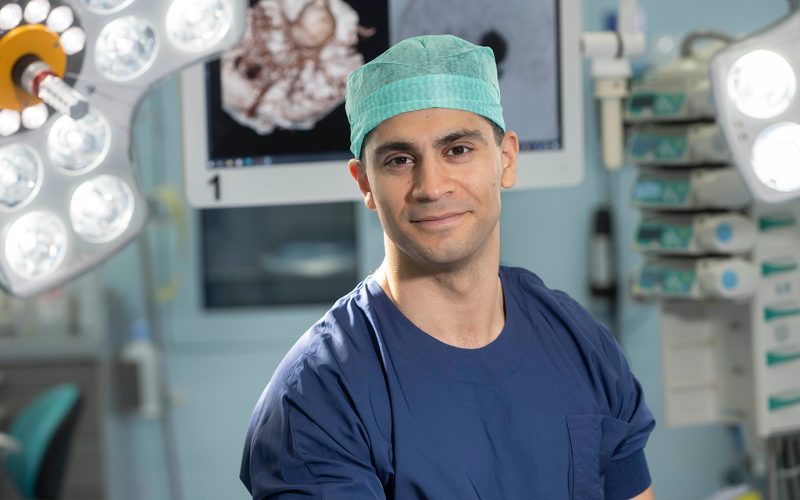A new treatment for patients with a blood accumulation between the brain and its outer protective layer is moving a step closer to clinical use. Neurosurgeon Dara from UMC Utrecht has received a Demonstrator grant from the Dutch Research Council (NWO) to develop the ELASA technique: an image-guided, minimally invasive therapy. His project ranked second in the national selection of six awarded proposals.
The medical name for this condition is a chronic subdural hematoma (CSDH). This serious condition mainly affects older people, often following a fall or mild head injury. “The blood accumulation increases pressure on the brain,” Dara explains. “Patients may experience headaches, drowsiness, confusion, mobility problems, paralysis or even become comatose. Without timely treatment, it can result in permanent damage or even death.”
The current standard treatment is burr hole craniostomy (BHC): a procedure in which the blood is drained through a small opening in the skull. It’s the most commonly performed neurosurgical procedure worldwide. However, this approach does not address the root cause of the bleeding and has a high recurrence rate—up to 30 percent.
The new ELASA technique (Endovascular Laser Assisted Subdural hematoma Aspiration) offers a safer and more effective alternative for treating chronic subdural hematomas. Using image-guided, minimally invasive technology, a thin flexible tube — a so-called microcatheter — is navigated through a blood vessel to the brain. Using angiography (an imaging technique that makes blood vessels visible with the help of contrast dye), the neurosurgeon can precisely locate the leakage and work in a targeted way. The microcatheter can then seal the leaking blood vessels and remove the accumulated blood and fluid.
In this way, two treatments that are currently performed separately are combined into a single procedure, leading to better outcomes and lower healthcare costs. “Our goal is to structurally improve the treatment of this common condition,” Dara says. “The Demonstrator grant helps us get the technology ready for the next phase, so I’m very grateful for this support.”
The Demonstrator programme supports researchers in translating their knowledge into products or services. The €160,000 grant enables the development of a Minimal Viable Product: a first functional prototype that can serve as a demonstrator. This allows third parties to assess the potential of the technology for future market introduction.
